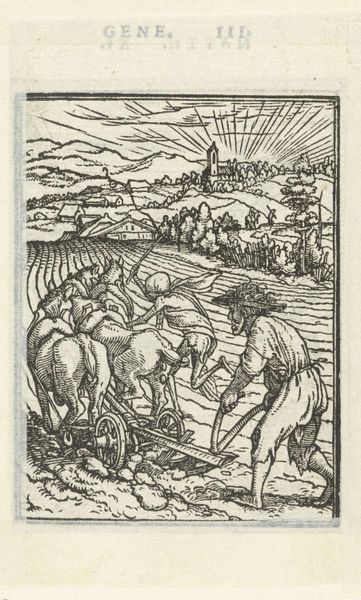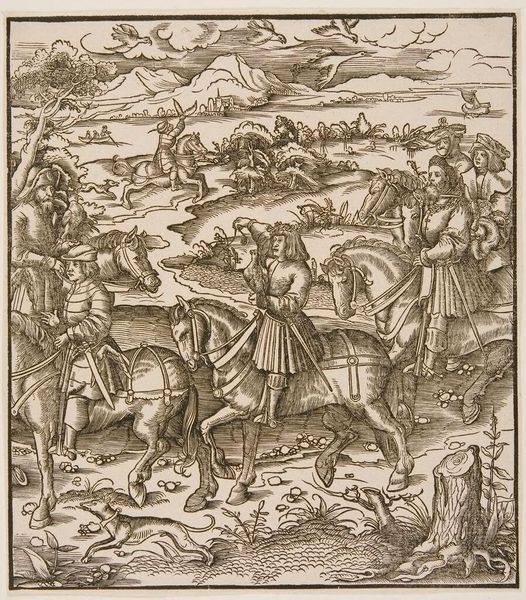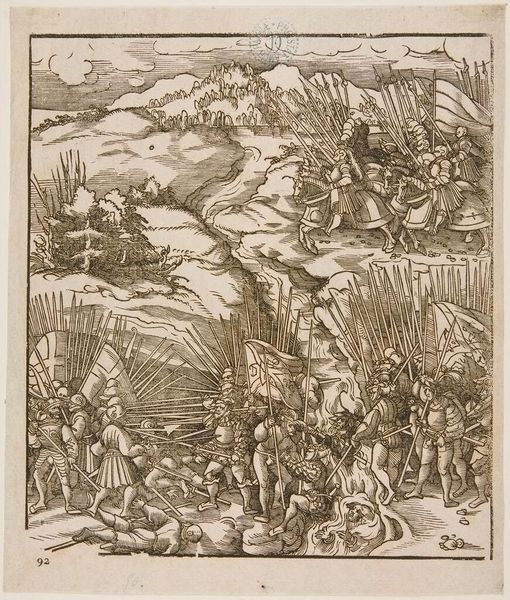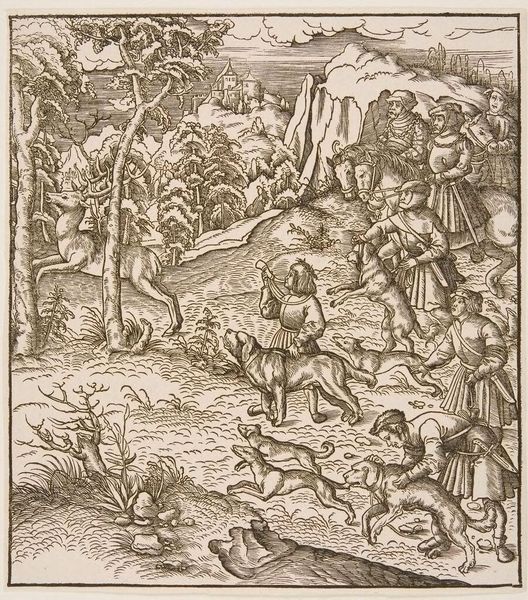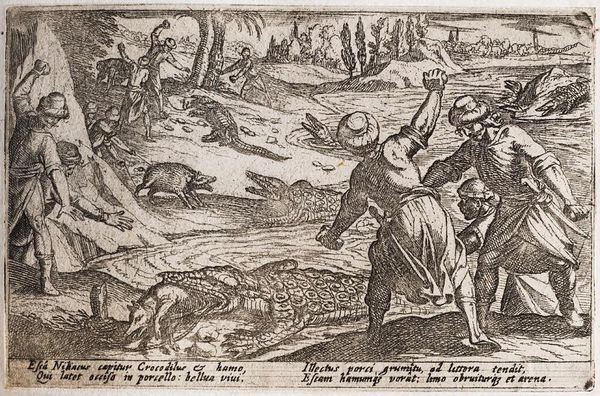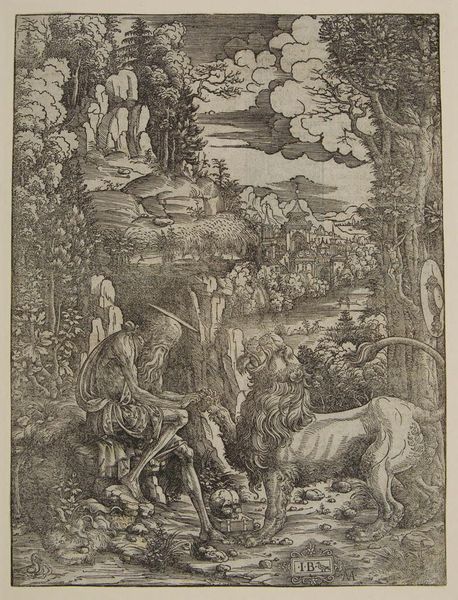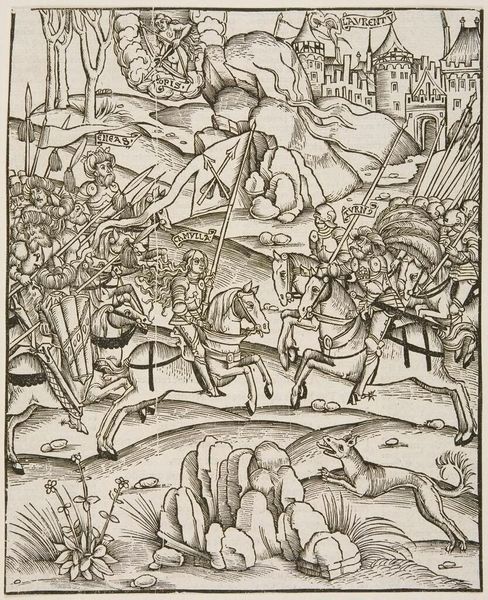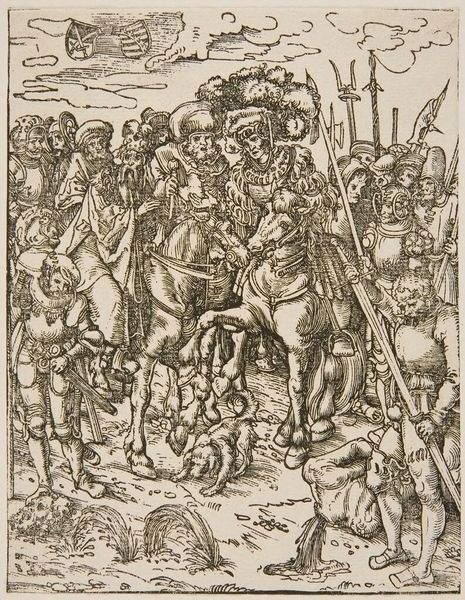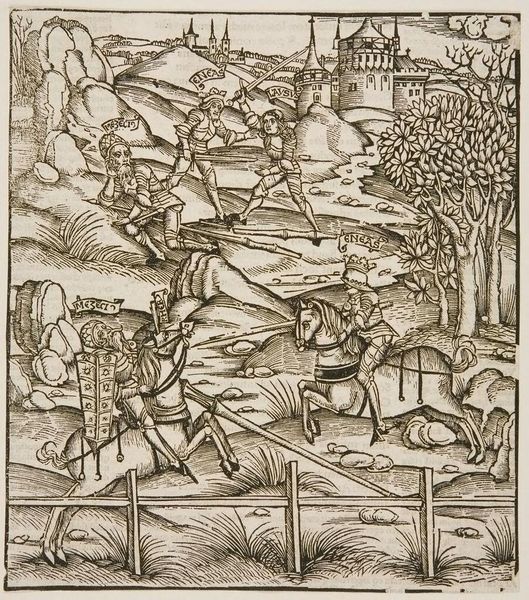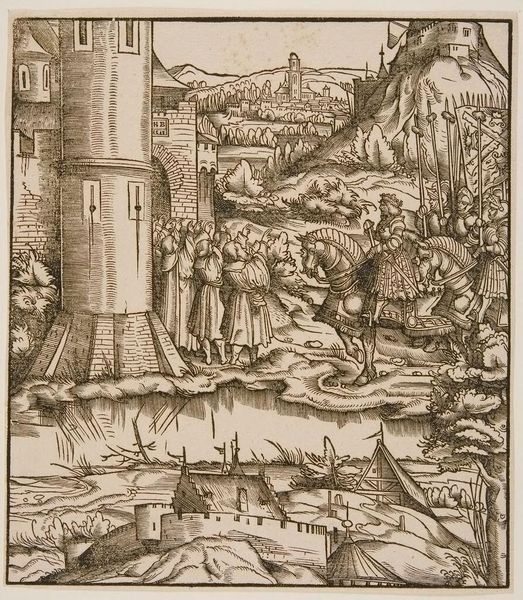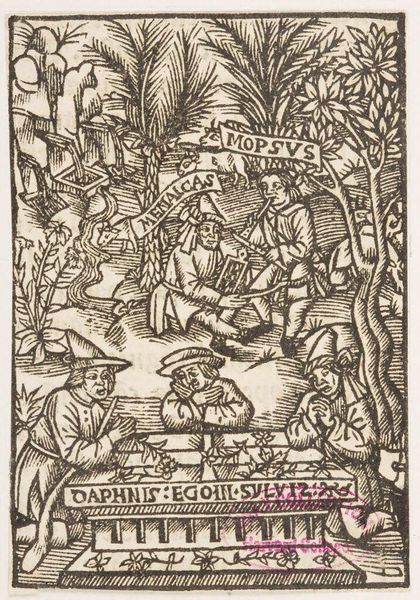
Copyright: CC0 1.0
Curator: This is "The Ploughman" by Hans Holbein the Younger. Editor: My first impression is that the stark, graphic lines create a sense of relentless labor. It feels almost allegorical. Curator: It’s from a series called "The Dance of Death," and it reflects the socio-political anxieties of its time. The plague, of course, was a constant presence. Editor: Ah, that explains it! Death as a skeletal figure driving the plow. The grim reaper actively participating in daily life, not just lurking in the shadows. Curator: Exactly. The woodcut medium allowed for wide dissemination, making this imagery incredibly potent in shaping public consciousness about mortality during the Reformation. Editor: The sun's rays behind the church are interesting, too, offering a glimmer of hope, but also subtly reminding us of judgment. Curator: I agree; Holbein skillfully uses religious symbolism to underscore themes of life, death, and the social order. Editor: I think I'll view labor differently now; this is more than just an image of work; it's a powerful reminder of our shared mortality. Curator: Indeed, and it offers a vital historical glimpse into how societies grapple with existential fears.
Comments
No comments
Be the first to comment and join the conversation on the ultimate creative platform.
